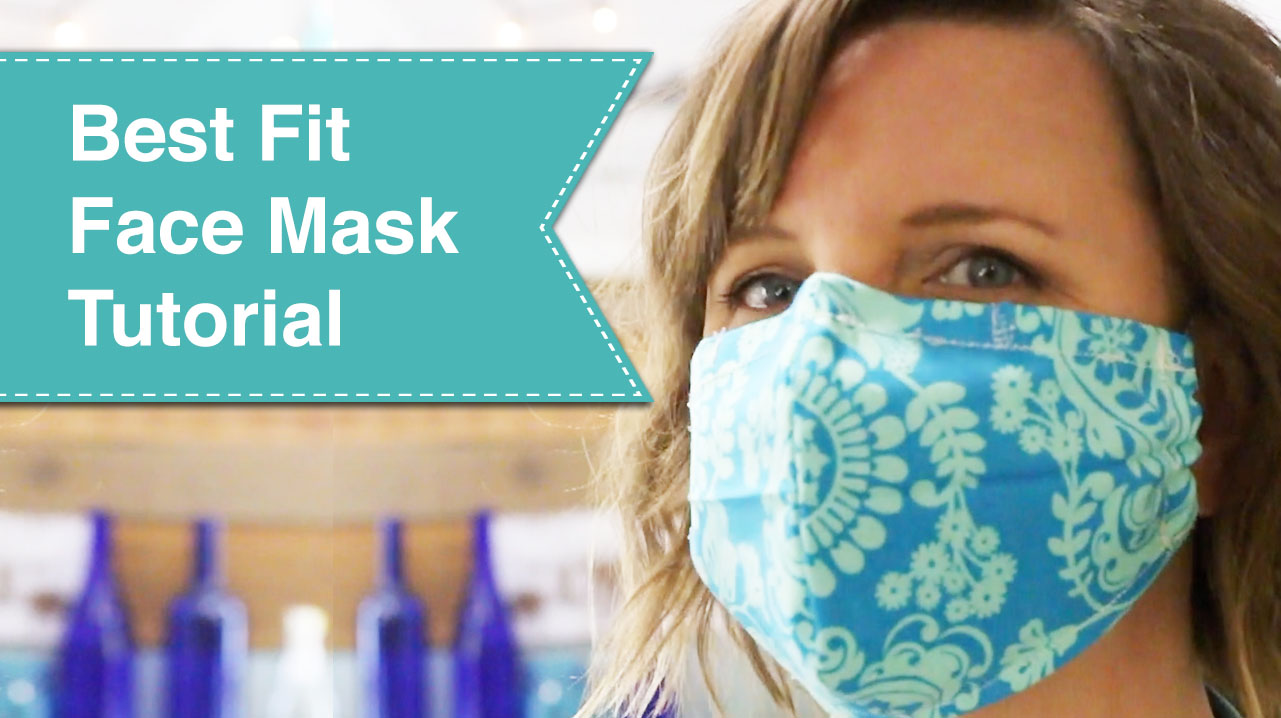
During the coronavirus outbreak I started making DIY Face Masks using some of the patterns I found online, but I really didn’t like the fit, especially because I was used to my more form-fitting and comfortable masks used for carpentry or demolition. So I designed what I’m calling the “Best Fit Facemask” tutorial. It’s more form-fitted onto the face and it has adjustable elastic ties around the ears to fit a wider variety of faces.
Best Fit Face Mask Tutorial
As a general contractor and woodworker, I had searched for form-fitting and comfortable masks to protect my lungs from dust and debris and had my favorites. For that reason, I knew there were better options than most of the sewing mask patterns I found. After a weekend, I designed this easy sew Best Fit Face Mask Tutorial for use by the public and medical professionals trying to protect N95 and surgical masks while also staying safe during the COVID crisis. (These are not a replacement for N95 or surgical masks. These masks are designed to add an additional layer of protection.) Looking for a simple, stylish, and better fitting face mask? Look no further.
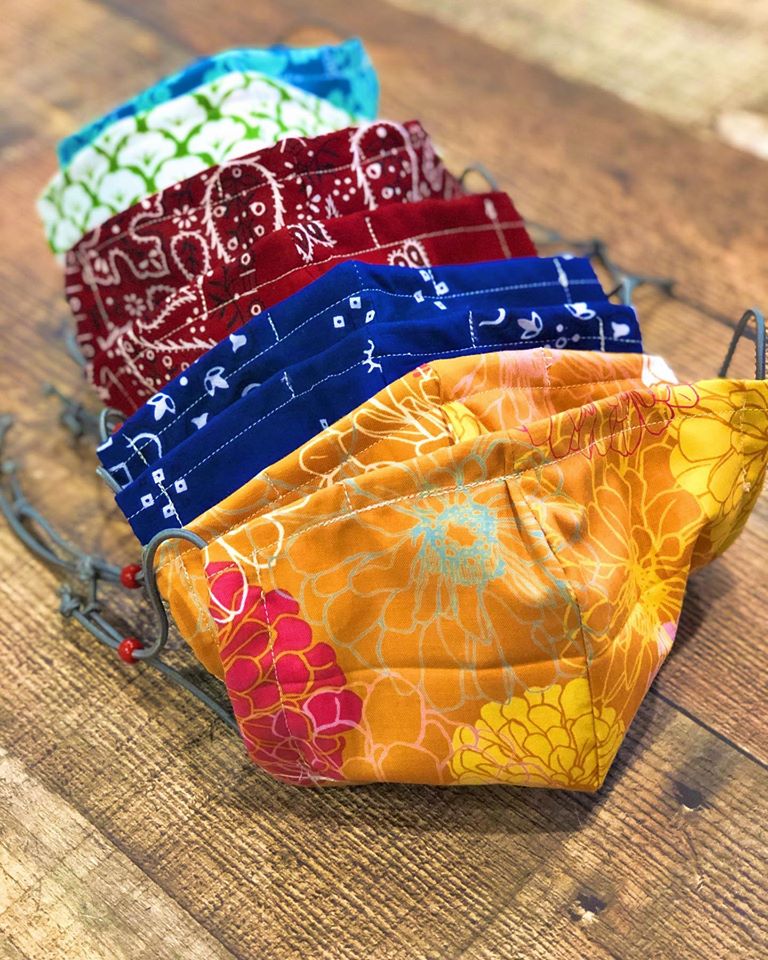
Face Mask Template Sizes:
After many requests, I finally have a variety of sizes. From a child size (fits approximately toddler to 5 year old) and then Small (fits youth and petite adult faces), Medium (fits most women or small men), Large (fits most men or larger women’s faces) and X-Large (fits long faces and men with beards.)
Even though you should pre-wash your fabric, the masks can still shrink slightly after the first post-construction wash. Therefore, check sizing after washing the finished mask.
Resizing: If you find the child size is too big, try printing at a 95%. Likewise, if the X-Large is still too small, try printing the pattern at 105%.
Does this mask have a filter pocket?
Filter Pockets or No Pocket, your choice! Instructions for sewing a mask with or without a filter pocket are included. In fact, it’s only one step difference. (Personally, I don’t use a filter pocket because it is harder to breathe through three or more layers.)
In addition to this pattern being easier to sew, it also uses less fabric to allow you to make more masks with the fabric you have on hand. Speaking of fabric, these are some sources for fabric in your home so you don’t have to buy anything!
Materials:
(I’ve included affiliate links for your convenience. I earn a small percentage from a purchase using these links. There is no additional cost to you. You can read more about affiliate links here.)
- Fabric (see below for suggestions)
- Scissors
- Thread
- Iron
- Elastic Strap material (see below for ideas)
- Nose clip materials (see below for suggestions)
- Craft bead (or buttons)
- Sewing Machine
Better Face Mask Fabric Materials:
There is some science behind the materials used for face masks. Although the tighter woven (more thread count) fabrics offer more protection, they do pose the issue of being harder to breathe through. If you want to choose the best materials for both, here is a list of best materials for making your DIY face mask when trying to prevent virus transmission.
Sources for Mask Materials in Your Home:
- Quilter’s Cotton Fabric
- Cotton Blend Fabric
- Sheets or Pillowcases
- Tea Towels (not terrycloth)
- Fabric Napkins
- Scarfs or Bandanas
- Flannel
- Dress Shirts
- Other Cotton Fabrics
- T-shirts (although the stretchiness makes them harder to sew.)
Nose Clip Materials:
My favorite nose clip material is the foam padded aluminum nose strip, but they are a little trickier to sew around. Second favorite are coffee bag ties (you can purchase them on Amazon or reclaim ones from coffee or donut bags.) An Instagram friend had suggested the coffee bag ties and I couldn’t be happier with the idea (thanks Nickolett!) But, despite our love of coffee, we didn’t have an endless supply of bags. And I could only make two nose clips from each bag tie.
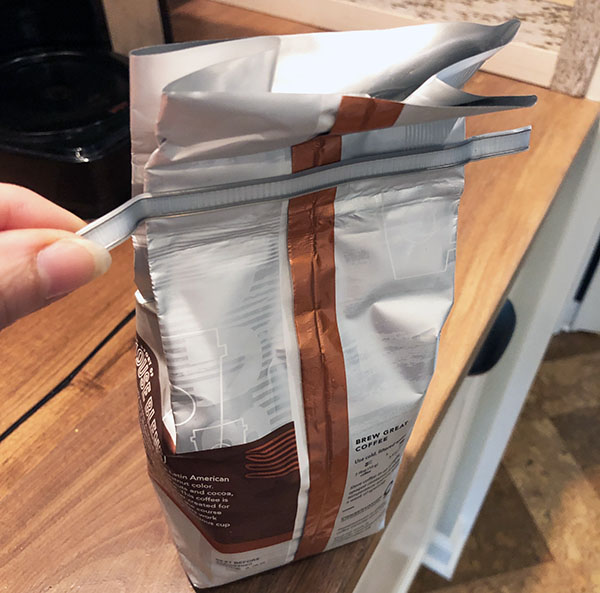
If you don’t want to purchase nose clips you may have these materials laying around:
- Electrical tape
- 18 gauge wire (or straightened paper clips)
Simple cut a piece of electrical tape 3 inches long. Lay two 2.5″ pieces of wire onto half the tape and fold over the other half to seal the wire inside the tape. Trim off the ends, leaving a small amount of tape to cover the wires. Yes, these will wash fine since the tape protects the wire. But any wire clips will eventually snap when bent back and forth too many times.
Less Successful Nose Clip Materials:
These items will work, but they either didn’t have enough of a “memory” in the bend, or they weren’t as comfortable. But, if it’s all you have, use it!
- Doubled Twisty Ties (not stong enough to hold shape.)
- Pipe Cleaners (tend to rust and break easier)
- Floral Wire
- Electrical Wire
- Triple-Layered cut-outs from foil take out containers
Adjustable Strap Materials:
I know the other materials that are hard to find are elastic, so here are a few acceptable alternatives.
- 1/8″ round shock or paracord (cut two 12 inch lengths per mask)
- Standard 55 (7 strand core) paracord (cut two 12 inch lengths per mask)
- 1″ cut strips of t-shirt material (cut 6-8 inch lengths and stretch to 12 inches long)
- Elastic Shoelaces (cut two 12 inch lengths per mask)
The key to the Best Fit Face Mask fitting so well is the adjustable straps. Using a craft bead on the straps allows the user to adjust the mask to their face. The paracord is the hardest to thread, but I found a great way to thread the strap material through the beads. Use fishing line folded in half. Thread the loop through the bead. Thread the strap material through the loop. Then pull the fishing line back through the bead.
The t-shirt material and elastic shoelace is much easier to thread through (especially when using the fishing line technique.) If you don’t have any of the above-mentioned strap material, you can use any cord or straps, but it’s crucial that the material can move freely in the sides so the side can gather at the back of your cheek. Stationary sewn straps will cause the material to push out away from your face.
No matter what material you use for the straps, be sure to tie the ends of your straps to prevent the bead from coming off. (And melt the ends with a lighter to prevent unraveling.)
If you don’t have craft beads, a button with some craft twine can work well as a strap adjuster. Or tie a slip knot following this video tutorial.
New Strap Design for The Most Comfortable Best Fit Face Mask!
With some schools opening back up and people going back to work, I made one change to the straps of the Best Fit Face Mask turning into my favorite mask and the Most Comfortable Best Fit Face Mask! Watch the video below for more information.
My Source for Flat Foldover Elastic to Make the Most Comfortable Best Fit Face Mask: Amazon or Etsy
Face Mask Templates:
The downloadable instructions contain the templates for both a medium and large size mask. Download by clicking on the images below which will take you to the full-size templates. Make sure your printer window is set to print actual size. Do not fit to paper size. Double-check your print out by measuring the one inch box on the template.
👉 Downloadable Instructions & Medium or Large Templates Here!👈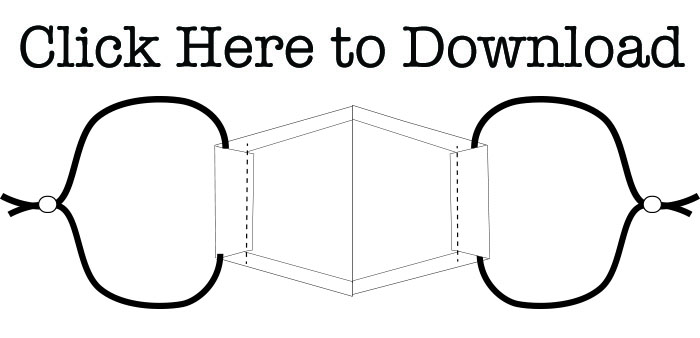
Looking for other size patterns? Download Patterns for other sizes below:
Don’t have a printer? Click on the links to see the dimensions of the Medium Best Fit Face Mask , Large Best Fit Face Mask, or Child, Small, and XLarge Face Mask.
Now, let’s get busy making the Best Fit Face Mask and be sure to share this tutorial with your friends and family so we can kick Coronavirus’s butt!
Video Tutorial:
Watching the video tutorial is the easiest way to learn how to make the Best Fit Facemask. Enjoy!
Instructions:
(Download Printable Instructions and Medium & Large Templates Here)
Print these instructions with the templates at the end. Make sure to print at actual size and check the size with the one inch box on the template.
1. Cut out the templates. Gently score along the dotted lines and fold.
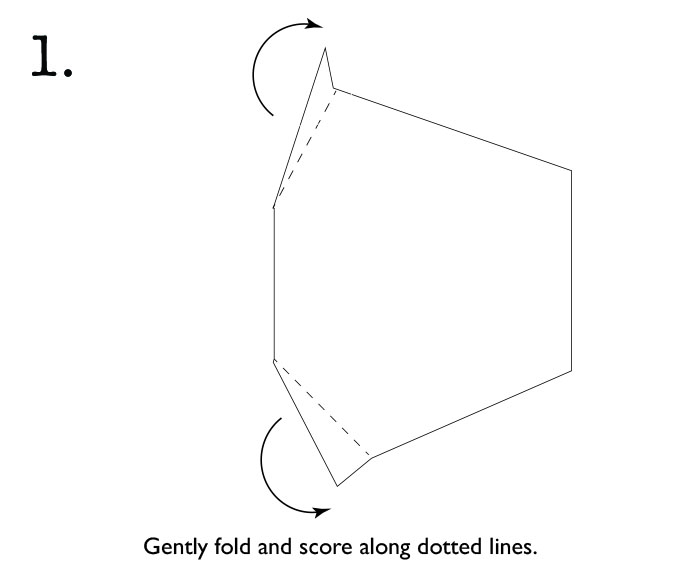
2. Trace the outside face mask template on your fabric. I designed the templates so you can get maximum use out of your fabric when making multiple masks. It helps to fold over the fabric and cut with the long sides of the template on the fold. But, you can rotate the template to fit more cuts out of the fabric. You’ll just have to seam together the pieces on the long side.
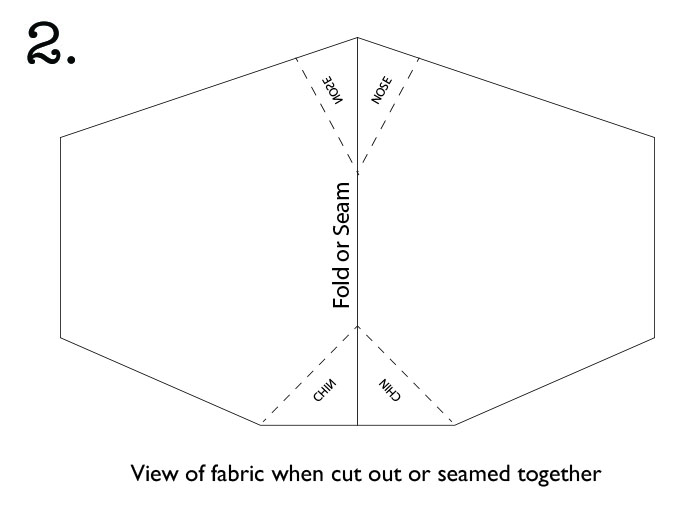
Lay your inside liner template onto your liner material. Trace and cut out fabric. (Important note: Hospitals are asking for masks with different fabrics for the outside and liner so they can visually see a difference.)
If you are making a filter pocket, you’ll need two liners (but only one outside piece.) If you need to connect two pieces of fabric together on the long side, do that now making sure right sides are together. I used a very small seam allowance.
3. Fold the corners of your template and mark a line onto your fabric at the fold. Repeat this on all pieces you cut out. Stitch along all the marked corners. If your fabric is printed, be sure your right sides are together. Now trim off the excess material at the corners making sure to cut close to the stitching.

4. Turn your outside mask material right sides out and press it with the iron. Lay the liner on top of the mask making sure the angled corners match for the nose and chin. Insert the liner fabric into the outside material and align the points and angles.
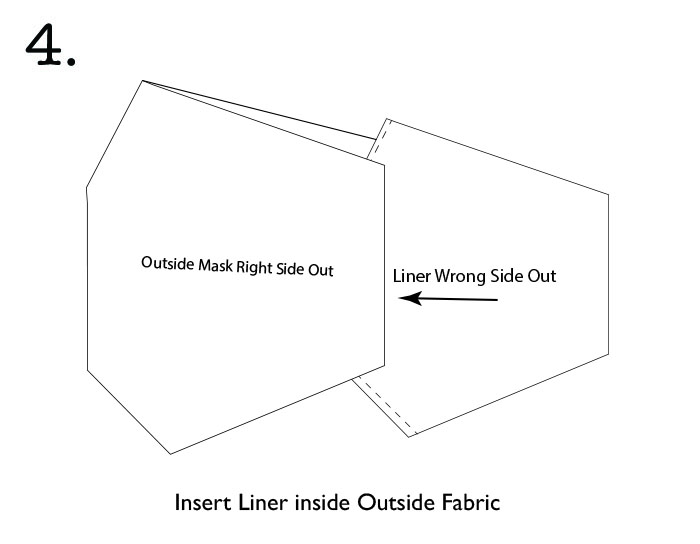
5. Then center the liner so there is an equal border of outside material around it.
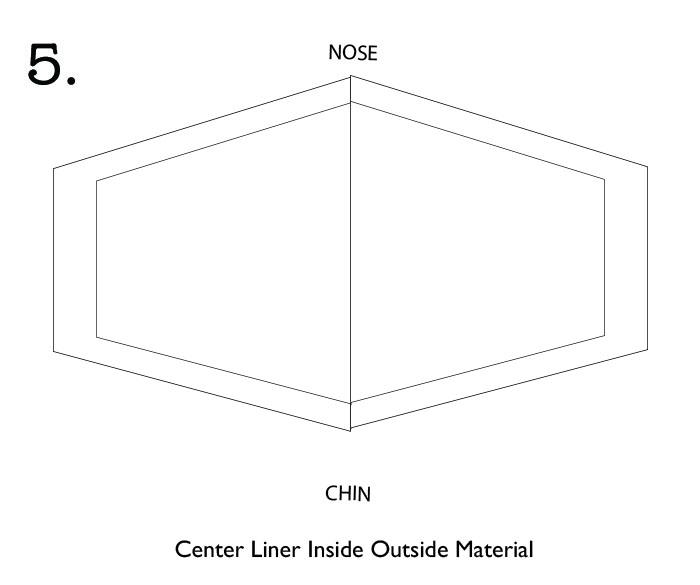
6. Fold over the outside material 1/2 inch to slightly overlap the edge of the liner. Press and then fold over the material a second time this time over the liner.
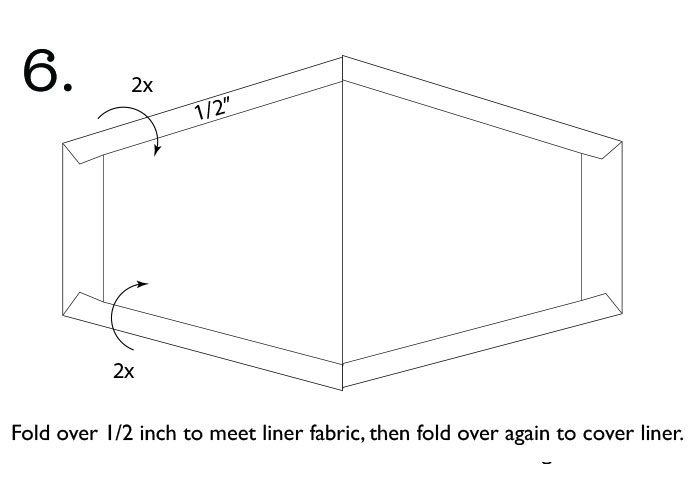
OPTIONAL:
Adding the Filter Pocket
This next step is only for those wanting to add a filter pocket. Just know that the more fabric you add, the harder the mask is to breathe through. Fold over ¾ an inch of the material twice at the ends of the second liner. Press it with the iron. Now stitch over both sides along this the edge to tack the fold-over in place. After stitching, insert the filter pocket on top of the liner (right side up), matching all the corner points. Then tuck it under the pre-ironed edges. If you need to, iron the edges again.
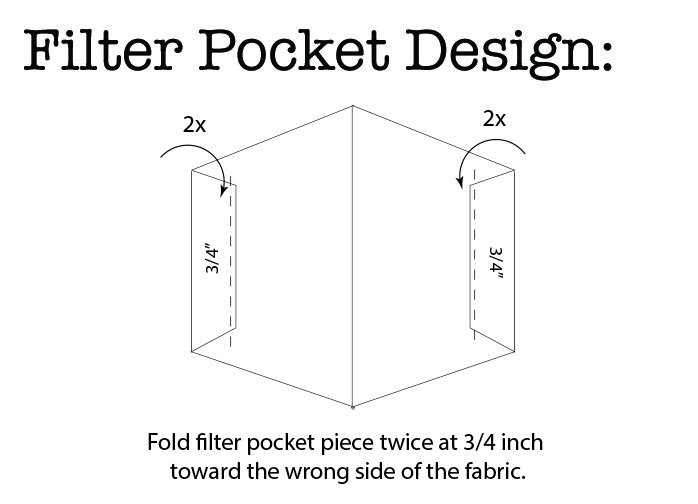
7. Locate the nose portion of the mask. Remember this is where you’ll be inserting the nose clip. Flatten the nose clip and tuck it under the binding of the nose. Use a clip or pin to hold the clip in place, but be careful not to put the pin all the way through the outside fabric layer so as not to add any large holes in the mask.
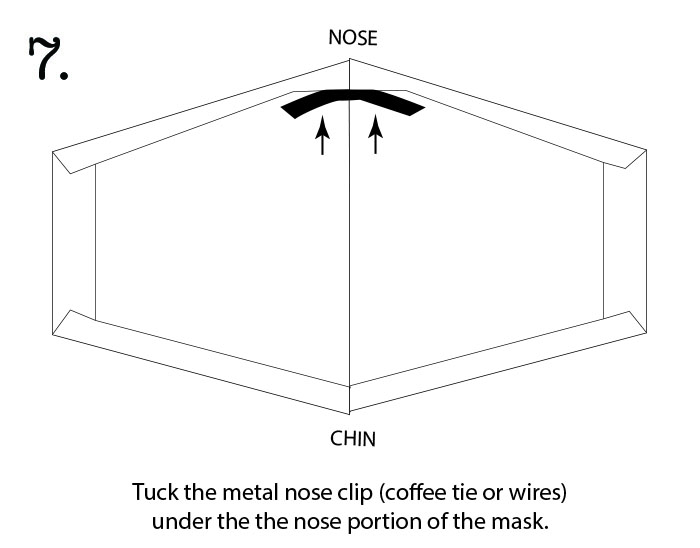
8. Stitch along the edge of the fold, being careful to avoid stitching onto the nose clip. Rotate the mask and stitch along the chin side of the mask.
Flip the mask over and feel for the nose clip. Sew a few stitches to the left and right of the nose clip to keep it from sliding around in the mask.
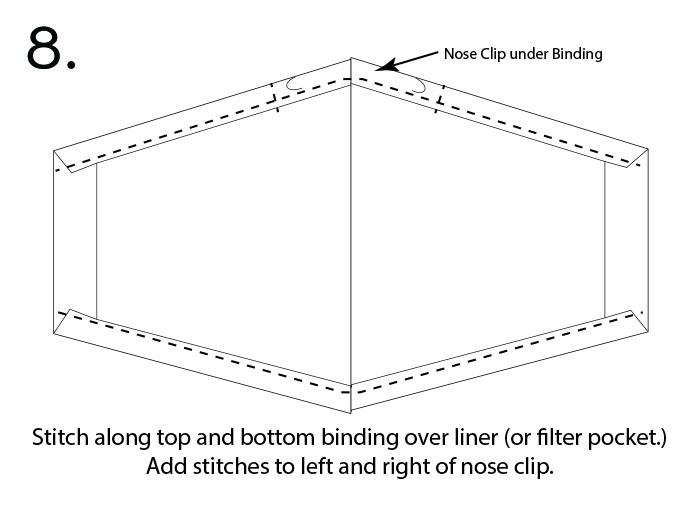
9. Double fold the ends of your mask about 3/4” twice to create a pocket for the ear straps. Be sure to avoid the filter pocket if you have one.
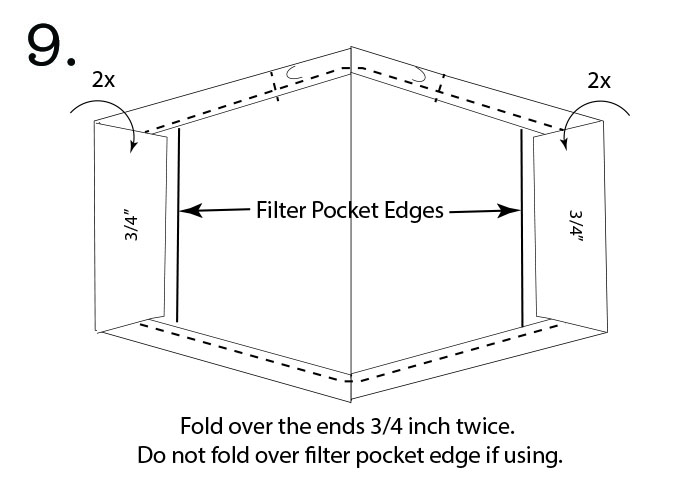
10. Time to grab the adjustable straps you made earlier. Take one strap and tuck it under the fold on the end. Stitch along the edge of the fold taking care not to stitch over the elastic. Repeat for the other side.
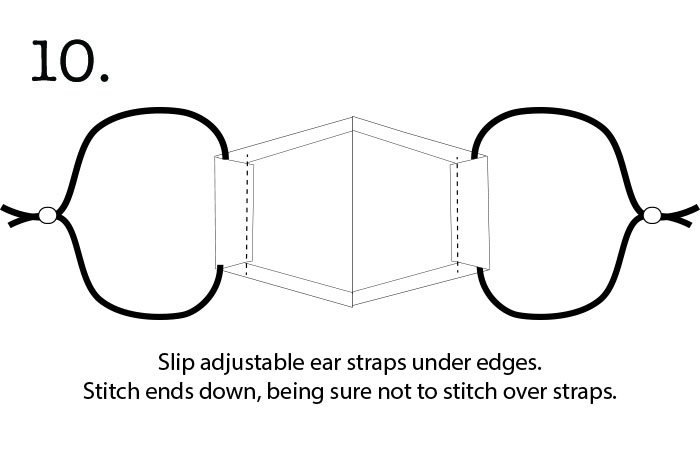
Make sure your straps still move freely in the fold. This allows the mask to cinch behind your cheek and not pucker.
This concludes your tutorial to make the Best Fit Face Mask.
UPDATE: I created a new video showing you some time-saving tips when making the Best Fit Face Mask. Plus, I answered a lot of questions! Watch this video to save time:
Everyone, please share this tutorial! Pin it, Tweet it, Facebook Share it, or Email it! Everyone should have a good fitting face mask for protection. After the Coronavirus is gone, these masks are great for woodworking or protection from seasonal pollen and allergens.
Stay kind, stay safe!
FAQs:
I appreciate all the comments, but I’m spending two hours a day replying to comments and emails. PLEASE READ THESE FAQs and check the COMMENTS below for answers to most asked questions before asking.
I also hope others can help answer questions if you see one. Thank you and take care.
• Where is the template? All the instructions and templates are on this page. If you can’t find it, please check again it’s linked under the Instruction section.
• Need Dimensions? They are included on this page. Look for the “Don’t have a printer?” link under Instructions.
• Who is selling them? This is an updated list of people who have contacted me and are selling face masks using my design.
• What size are the craft beads I used? The hole on my beads is 4mm.
• If I don’t have a bead, what can I use? Use a button and feed twine through the holes then tie them around your ear straps tight enough to hold the strap, but loose enough to be able to move the button. Or tie a slip knot (see the time saver video to learn how to tie a slip knot.)
• Can I skip the liner if using a filter pocket? At your own risk. I like to have two layers of fabric between me and the world. The filter pocket doesn’t extend all the way to the sides of the mask.
• What filter material should I use? Do your own research. Here’s a good article on options for filters.
• What material did you use for the liner? I used sheet material or a cotton curtain.
• Don’t have a particular material for this mask? I listed a variety of alternative materials on this page. There are plenty of other substitutes, but these are the ones I tried and can recommend.
• Are these washable? Absolutely. I wash mine before donating. The electric tape protects the wire from water. Frankly, the wire will break from repeated bending before it will rust.
• Is there a small or child size template? Do you have an X-Large size? YES!!! See the downloads and information for the child size, small, and X-Large above. (A child-size fits a four-year-old well but was a little too big for a two-year-old. You’ll have to play with printing the templates smaller or larger if these sizes don’t fit your needs. Or see the Time Saver Video to learn how to resize your template.
• Can’t thread your straps through the bead? Try using fishing line folded in half and feed through the bead loop first. Put strap material through the fishing line loop and pull it back through the bead. You can see a video of this process in my Time Saver Video.
• Video too fast? Don’t like the music? Keep your thoughts to yourself and download the instructions on this page. (Then you can play your own music and you can read it at your own pace.)

P.s. If you got to the end of this tutorial and still have questions, please read the comment section as many questions have been answered. I am receiving numerous questions and comments via email, YouTube, and the blog. It is impossible for me to answer all of them.
Pin this Tutorial for future use (or to share with others!)


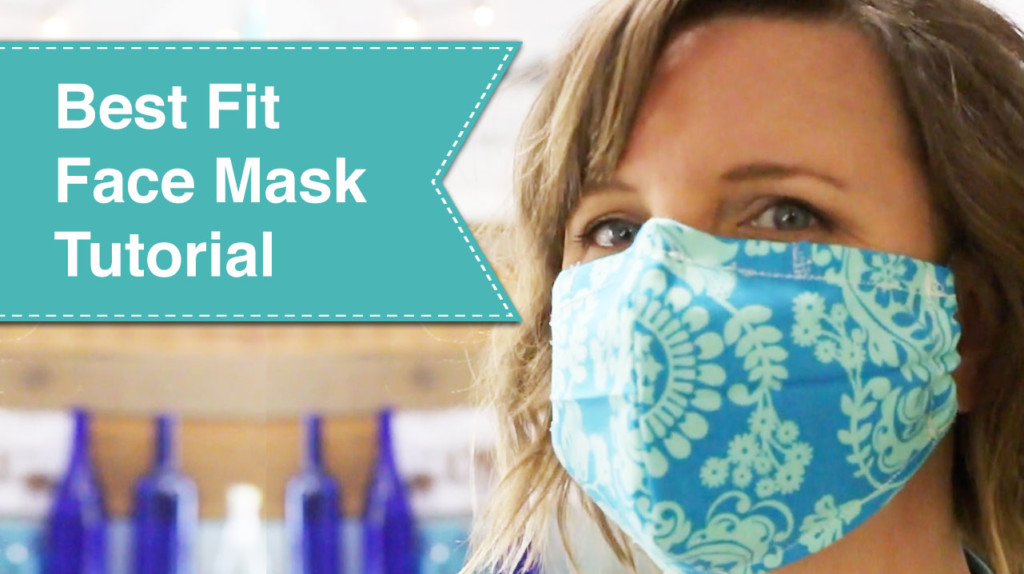
Thank you so much for your amazing pattern!! I have made so many masks using it! Everyone in my family seems to like a different variation. One kid likes hers made out of old tie-dye t-shirts with straps made from t-shirt strips. My other kid likes hers made out of fashionable 100% cotton fabrics. My husband has to have his either be black or match his Army uniform, so I cut up an extra of his uniform t-shirts to make him a bunch of masks that are very comfortable and look great with his uniform. Thank you so much for the pattern, video, and time-saving tips!! My entire family prefers this style of mask over any other!!
You’re welcome.
Are there measurements for each size of your face mask? I am hoping to provide for people so they can tell me what size would best fit them depending on their measurements. Thank you!
I only have the measurements for the fabric template. You could probably do the math and subtract for the seam allowance and a little more since they shrink a tiny bit after washing again.
The measurements for the template can be downloaded from this page: https://prettyhandygirl.com/best-fit-facemask/
I sewed a line under the nose to make it easily recognized as the nose, not the chin.
Great idea.
I made a couple of modifications:
1. 18 gauge stainless steel wire 5 ” long folded placed under folded top when sewing down.
2. Elastic sewn into top and bottom hems, one on each side vertically. This enables slipping a disposable surgical mask underneath these straps instead of creating a ( 3rd layer ) pocket.
I also sewed the liner to the outside piece when sewing the nose and chin angles , cut open the fold and lay the hems flat. Since I am putting a disposable surgical mask inside, these raw hems don’t bother me.
what is total length of eleastic for around the head and neck? Watched video, but 18″ doesn’t make sense to me.
It was an error. 36″, sorry for the confusion.
Thank you so much for sharing. Keep Safe!
What are the recommended washing instructions for the mask? I use the electrical tape/wire nose piece. Is it OK to put this in the dryer?
Yes, you can wash and dry it. See the FAQs on this same page where you left a comment.
fantastic mask design, having been making them for charity. every one loves them. Thank you
I made the child size for a 4 year old and I now have to remake them because they are huge. The size fits my face and im 24. Will try and print it at a smaller size but not sure why the original print is so big. I even made sure the 1 inch box was indeed 1 inch
That is odd, I haven’t had this complaint from the millions of others who have made them.
I’m having a hard time telling top from bottom and know it would be even worse for a child. Does it make that much difference? Mine look so close to being alike, thinking of just making them the same – how would this work out?
You should be using a nose clip on the nose side. That would make a difference. Also, feel free to label the Nose side with an N if you like before sewing.
I absolutely love your mall design and have made them for everyone. You show a picture of a guy with a beard, that mask seems longer and gathered at the bottom. Do you have another pattern for men with beards beside just making the XL mask?
His mask was an XL. There were no modifications to his mask, other than I made his a Most Comfortable Best Fit: https://prettyhandygirl.com/most-comfortable-best-fit-face-mask/
Having trouble sleeping, it’s 4AM and I be finally got my machine working again so I’m looking at the best patterns and saw your suggestion of using all those wire ties. I did make a few before my machine went down back in June. I was using flashing from the hardware store. It’s easy to cut and it’s super cheap. I got enough for dozens for a little more than $2. Tin snips are needed unless you have an old paper cutter you don’t care about dulling the blade. I used a newer one and after cutting a few dozen it still cut paper and they stayed uniform in size. I use a file to soften the sharp edges so it wouldn’t push through, but I’m sure it’s fine without. They work like a dream! Sorry if somone else suggested, I’m too lazy to read through all the comments! 😁
Thank you for this excellent tutorial and templates. I have been making your masks for a few months now and have had many people tell me they are the best fitting ones yet and have less fog-up on their glasses due to the nose wire. So happy for the new sizes!
Yours is one of the best patterns, Brittany, because it can be on the fold, so there is no seam centre front. Stitching leaves holes, defeating the purpose of a mask.
How long do you make the ribbon for a child’s mask? I know it’s 38 inches for an adult but I’m not sure what to use for a child & the child I’m making the mask for isn’t here right now. Thanks!
It’s best to use at least 32″ and cut to size after they put it on.